What are Reflexes?
Primitive Reflexes are reflexes that develop in the brain stem before birth. They are involuntary reactions that help the baby with positioning in the womb, birthing, breathing, feeding, and gross motor skills. Most of these primitive reflexes go away throughout the first year of life. However, if primitive reflexes persist they can contribute to difficulties with coordination, balance, sensory difficulties, fine motor skills, sleep, impulse control, concentration, and all levels of social, emotional, and academic learning.
Types of Primitive Reflexes:
Asymmetric Tonic Neck Reflex (ATNR):
– Asymmetric Tonic Neck Reflex typically integrates between 6-7 months of age.
– Common impacts children may face when Asymmetric Tonic Neck Reflex does not integrate include:
- Difficulty with bilateral coordination
- Poor eye-hand coordination
- Poor visual tracking when reading and writing
- Difficulty crossing midline
- Difficulty with handwriting
Symmetrical Tonic Neck REFLEX (STNR):
– Symmetrical Tonic Neck Reflex typically integrates between 9-10 months of age.
– Common impacts children may face when Symmetrical Tonic Neck Reflex does not integrate include:
- Poor eye-hand coordination
- Difficulty copying from a board
- Poor concentration and organization
- Poor posture
Moro Reflex:
– Moro reflex typically integrates between 3-6 months of age.
– Common impacts children may face when Moro reflex does not integrate include:
- Sleep disturbances
- Emotional outbursts
- Mood swings
- Poor balance and coordination
- Poor impulse control
- Cycles of hyperactivity and extreme fatigue
- Difficulty with vision
- Reading, or writing
- Vestibular sensitivity, anxiety
- Nervousness
- Overreactions
Testing Reflexes:
Testing ATNR:
Test 1: Have the child stand with their feet together with their arms and hands straight out in front of them. Ask the child to turn their head to their left and then their right. Only their head should move. If their elbows bend or shoulders turn in the direction of the head the reflex is most likely present.
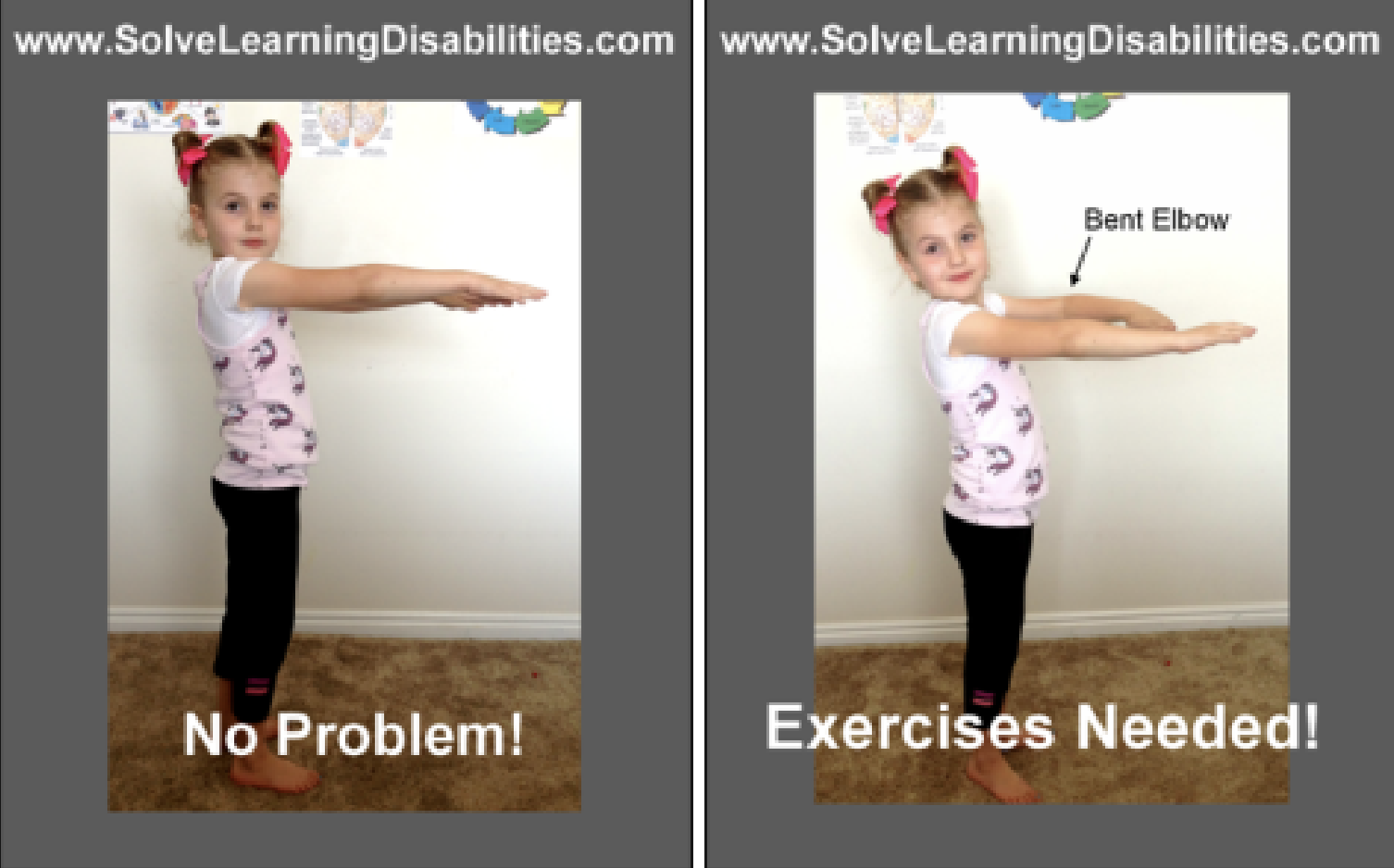
Test 2: Position your child on their hands and knees like they are about to crawl. Ask them to look from their right side and then to their left side. Their arms should remain straight. If their elbows bend then the reflex is most likely present.

Testing STNR:
Have the child get down on their hands and knees. Now ask the child to lower the head bringing the chin toward the belly button, then raise the head up toward the ceiling. Do this 3 times. If their back arches when their head is down towards their belly button then the reflex is most likely present.
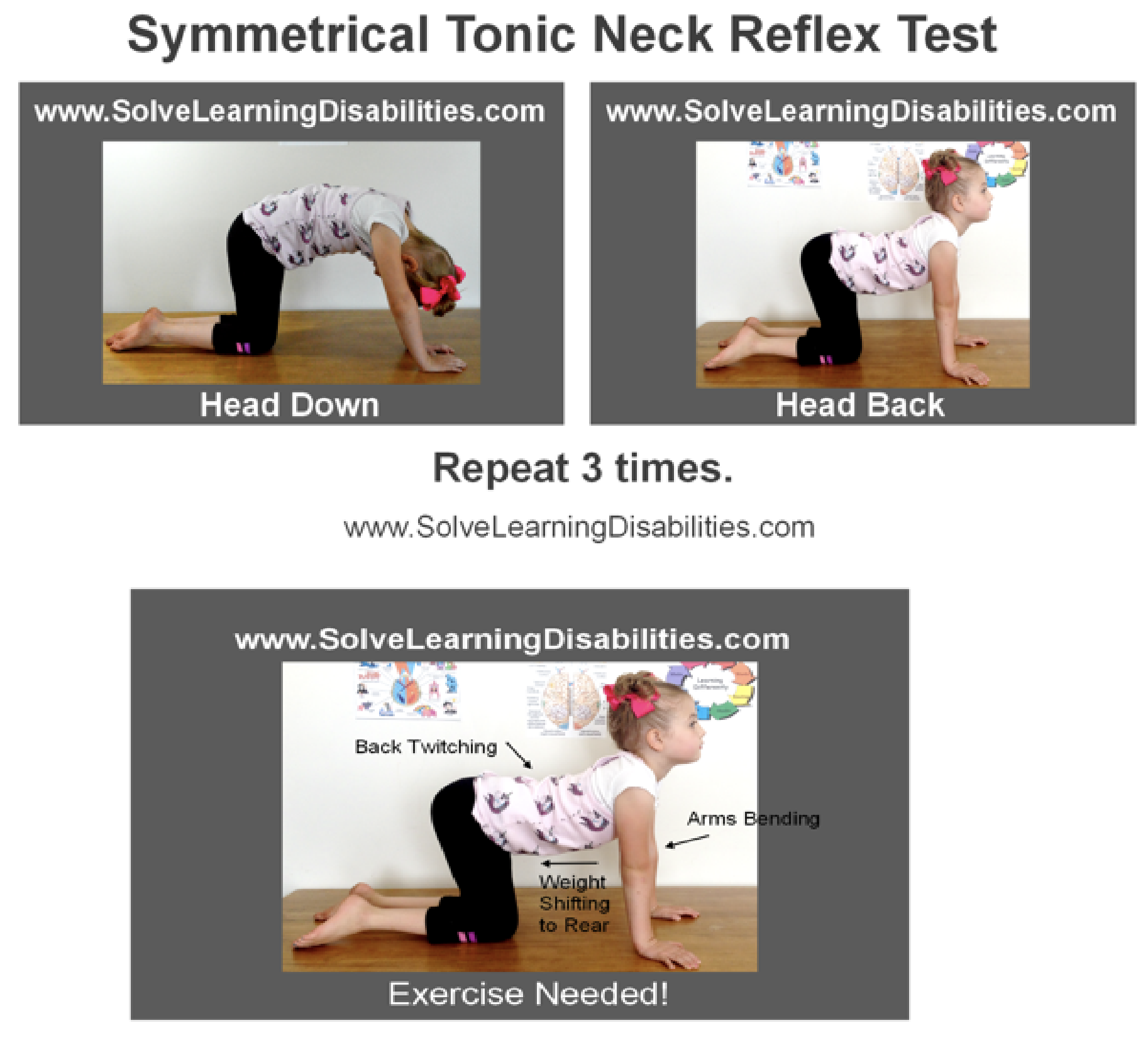
Testing MORO:
Have the child sit on a low chair or lay on their back. Ask them to open their arms and legs out like a starfish. Next, have the child cross their arms as they curl up.
Now ask them to spread their arms and legs out again and then cross again but with the same arm and same leg on top this time. If they struggle to complete the exercise then the Moro reflex is most likely present.
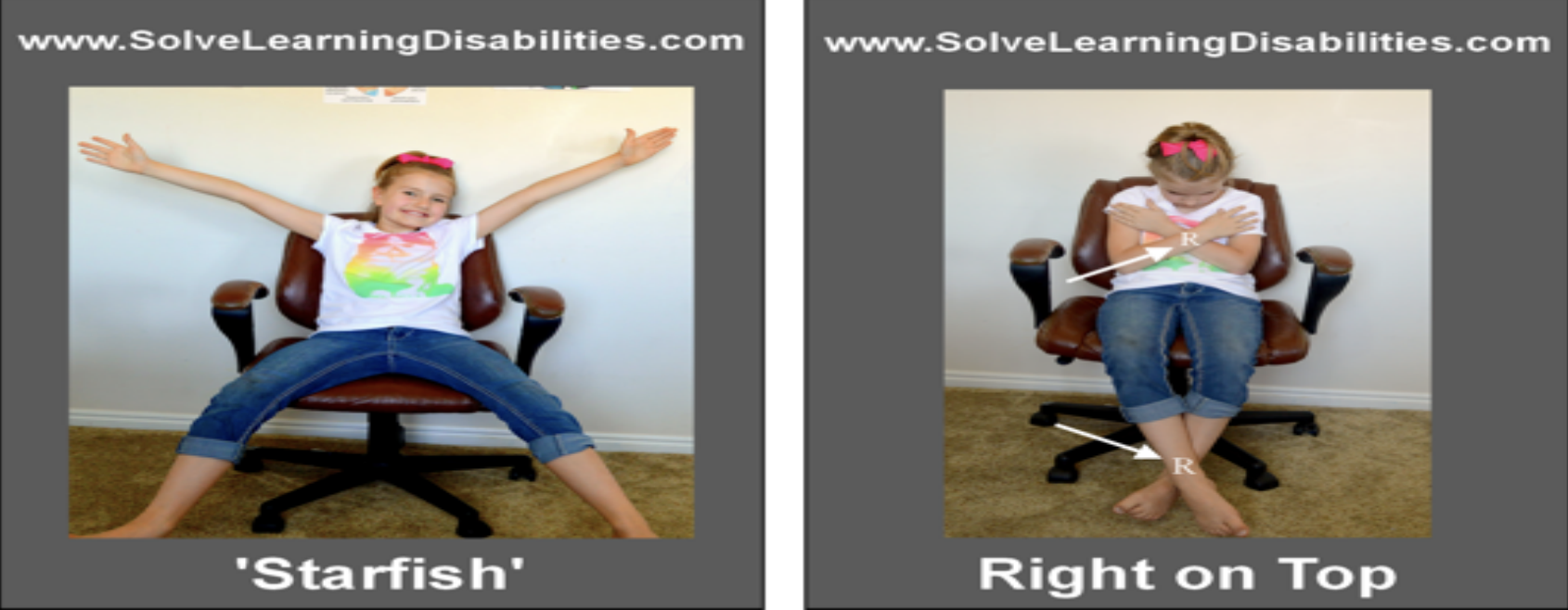
EXERCISES TO INTEGRATE REFLEXES:
Exercises to work on ATNR:
– Have children crawl on their hands and knees and turn their heads left and right continuously while they crawl
– Play games in a hand and knees position that requires the child to turn their head to the left or right and reach with the same arm while keeping the opposite arm straight
– Complete lizard exercises (see photo below)
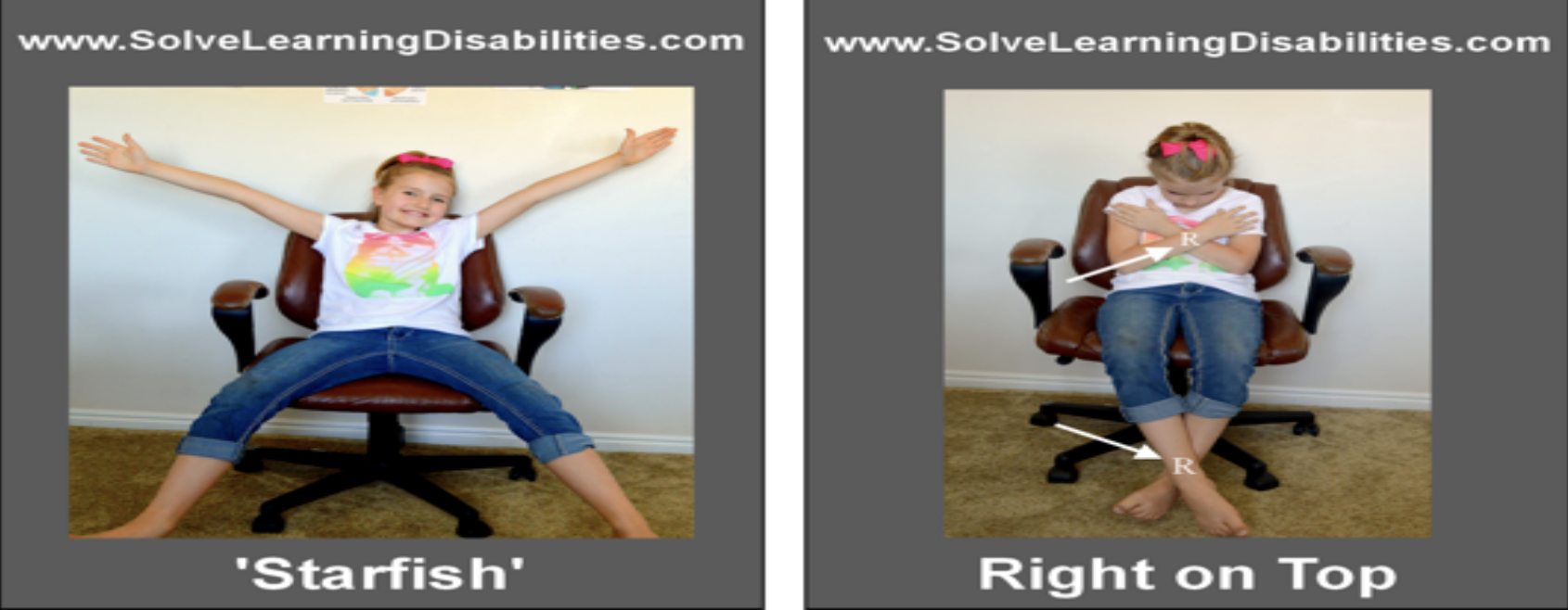
Exercises to work on STNR:
Tall kneel while doing activities at a table or other supporting surface
- Weight bear through both knees, keep bottom off of feet while maintaining an upright posture
- Keep from resting belly and/or forearms against the supported surface
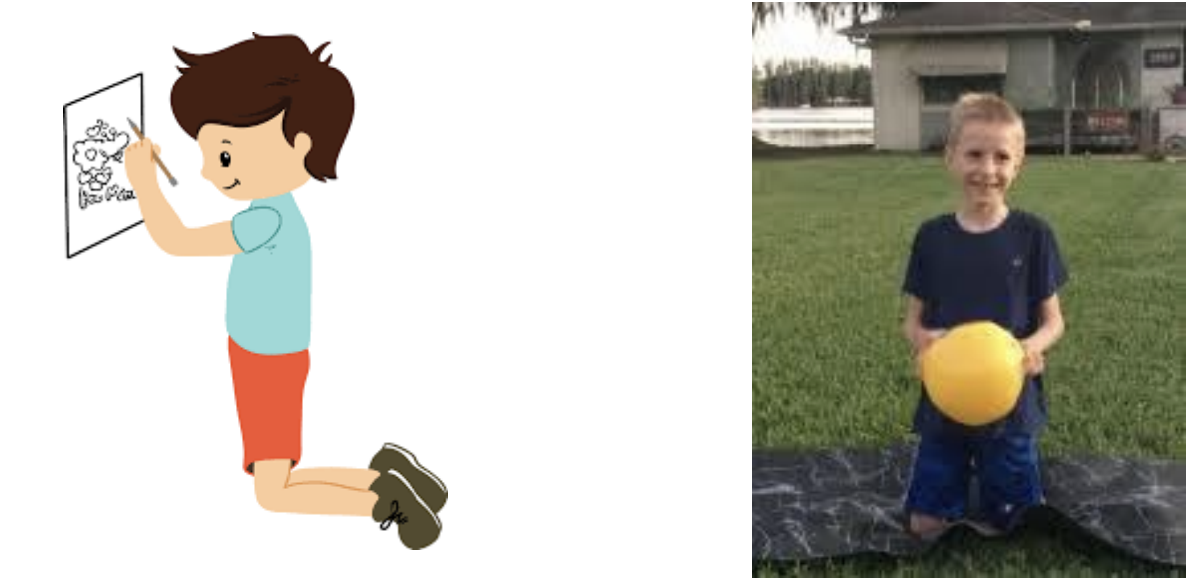
Exercises to work on MORO:
Duck Walks
- Walk like a duck with hands on hips
- Keeping toes facing out/turning both feet out to the side while walking forward
- Be sure to maintain both hands on hips while walking (Seen picture below)

Pigeon Walks
- Walk like a pigeon with hands behind head
- Keeping toes facing in, toward each other while walking forward
- Place hands behind head as if you are about to do a sit-up
Resources:
8 Primitive Reflexes That Every Parent Should Know About. (n.d.). Solve Learning Disabilities. Retrieved July 21, 2022, from https://www.solvelearningdisabilities.com/8-primitive-reflexes-that-every-parent-should-k now-about/
Diana Feldhacker, Reilly Cosgrove, Benjamin Feiten, Kayleigh Schmidt, Marissa Stewart; Relationship Between Retained Primitive Reflexes and Scholastic Performance. Am J Occup Ther August 2021, Vol. 75(Supplement_2), 7512505164p1. doi: https://doi.org/10.5014/ajot.2021.75S2-RP164
Gieysztor, E. Z., Choińska, A. M., & Paprocka-Borowicz, M. (2018). Persistence of primitive reflexes and associated motor problems in healthy preschool children. Archives of medical science : AMS, 14(1), 167–173. https://doi.org/10.5114/aoms.2016.60503
